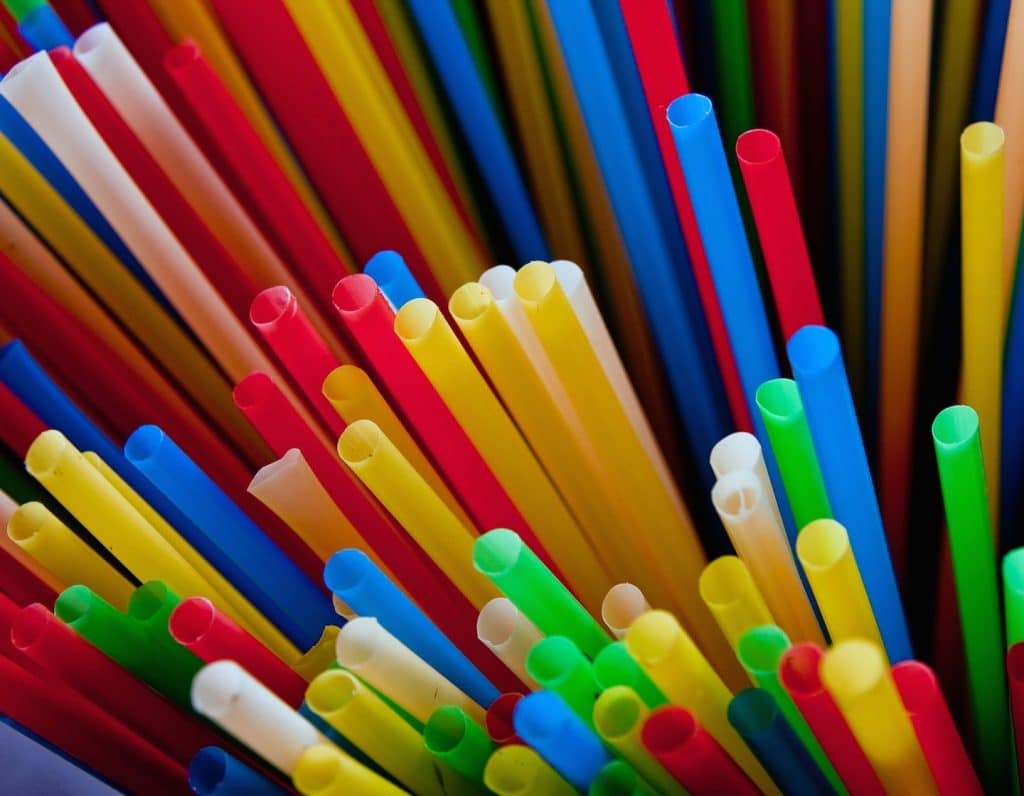



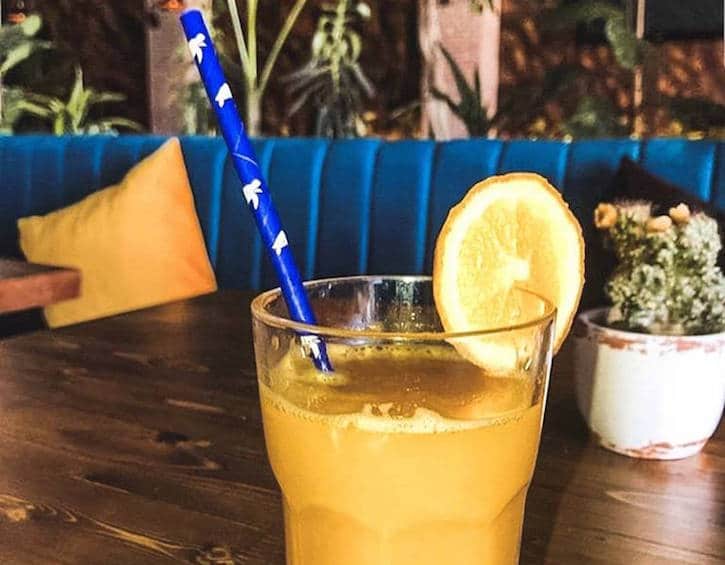
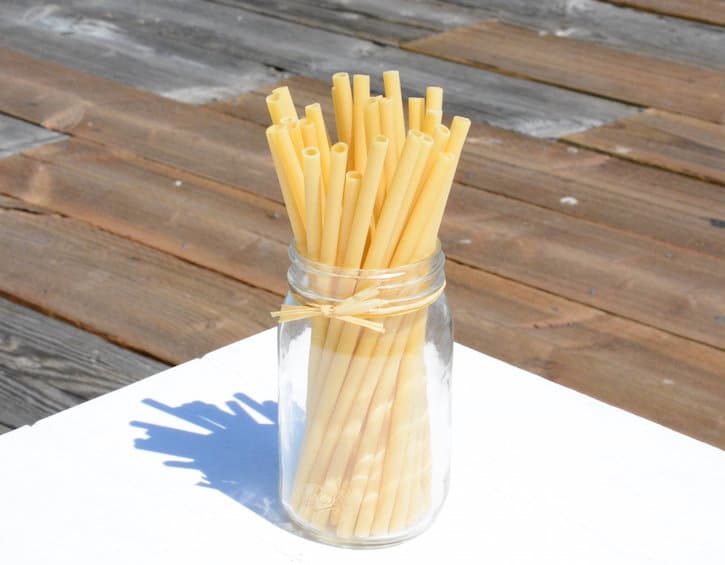
Scientists estimate nearly 8.3 billion plastic straws pollute the world’s beaches; here’s what we can do to reduce waste and live more sustainably
Plastic straw bans seem to be all the rage right now – restaurants like Starbucks and McDonalds have begun to phase them out; many hotel chains and airlines now offer alternatives; even California – the largest state in the U.S. – now has a plastic straw ban (and entire countries like Taiwan, Belize and England have all proposed similar measures). There’s also a clever hashtag campaign called #StopSucking (Leonardo DiCaprio’s a fan!).

As of July 1 2019, an impressive 270 F&B outlets in Singapore, in collaboration with the World Wildlife Fund for Nature (WWF) and Singapore’s National Environment Agency (NEA), will phase out plastic straws (going forward they will only be provided to customers upon request or for medical reasons). It’s all part of PACT (Plastic ACTion). Be sure to click here to see the full list of participating food outlets, as we want to encourage and support their good works with our patronage!
Despite the recent progress, there’s also been some backlash: many small businesses without the clout of global superchains fret about the increased costs of bamboo or paper straws in comparison to plastic ones. Parents with small children who can’t yet drink from a cup need a solution to keep from spilling when they’re out and about. And people with disabilities who are unable to make use of plastic alternatives worry that straw bans will create yet another obstacle for accessibility.
Read more: How this mama lives a zero-waste lifestyle in Singapore
To be sure: the scourge of single-use plastics goes far beyond just straws; plastic bags, plastic drink lids, plastic cutlery and plastic cups are just as bad (though straws are particularly egregious since they’re too small and lightweight to be recycled). But that doesn’t mean we should throw our hands up and walk away.
Read on for more on why you should stop using single-use plastic straws (whenever possible), along with a comprehensive breakdown of plastic straw alternatives – including metal straws, paper straws, bamboo straws, even pasta straws – and the pros and cons of each. Swipe through our gallery to see reusable straw options available in Singapore. Let’s all do our part, mamas!
Read more: 7 Single-Use Swaps to Reduce Plastic Waste
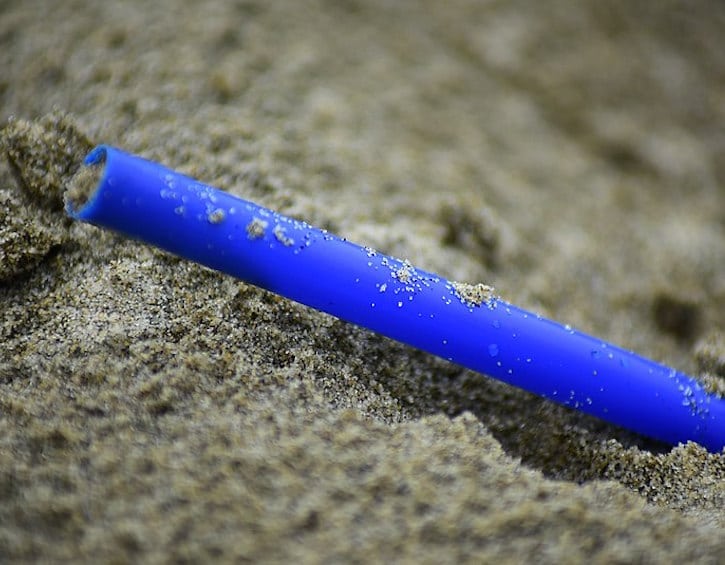
What is the environmental impact of plastic straws?
Many point to this shockingly disturbing viral video from 2015 of a sea turtle with a straw stuck in its nose as their awakening moment. Plastic can not only choke or strangle marine wildlife, but toxic chemicals like BPA also seep into the water, with a carcinogenic effect (killing coral reef, for instance).
Way back in 2011, a 9-year-old named Milo Cress started a campaign called “Be Straw Free” – amazingly, his research at the time led to the oft-cited estimate that in the United States alone, 500 million straws are thrown out each day. According to the New York Times, this estimate is on the high side; “Market research firms put the figure between 170 million and 390 million per day, or 63 billion to 142 billion straws per year.”
That figure’s still certainly nothing to sneeze at. A more recent scientific study estimates there are nearly 8.3 billion plastic straws littering beaches around the globe. Take a moment to think about your daily routine; perhaps you grab an iced coffee in the morning, then have a takeaway soda or juice at lunch. Then maybe you go out for dinner with your girlfriends and have a couple rounds of cocktails. Straws are SO ubiquitous, we barely think about them — and that’s the problem.
“Over the last 10 years, we have produced more plastic than in the whole of the last century, and 50 percent of the plastic we use is single-use and is immediately thrown away,” Tessa Hempson of Oceans Without Borders Foundation told National Geographic.
Anyone who’s done a beach clean-up in Singapore would immediately nod knowingly; incidentally, this is a fantastic way to illustrate the problem first hand and make it relatable to young children (without traumatizing them with the infamous turtle video).
According to The Economist, only 9% of the world’s plastic is recycled – and the majority of the plastic polluting our oceans comes from right here in Asia.
Read more: Singapore Children’s Book Captain Green and the Plastic Scene
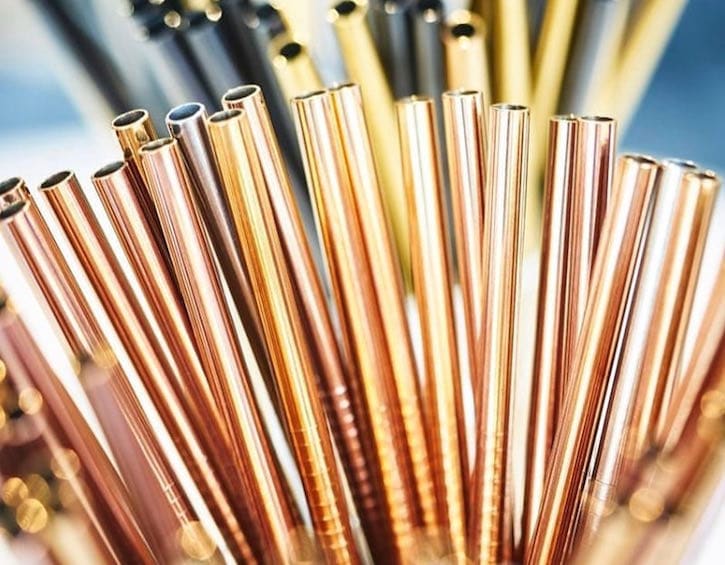
What are the alternatives?
Even in the last 1-2 years we’ve seen a huge expansion in the types of reusable straws available in Singapore (used to be we’d have to order metal straws from abroad!). Today you can order metal, glass and bamboo straws on Lazada. Starbucks sells colourful silicone straws (ideal for kiddos!). And we picked up a couple handy folding straws at Coffee Bean (at $9 apiece) that are perfect for carrying around in your purse. Try browsing shops like The Green Collective or The Social Space if you want to weigh your options in person.
Read on for the various straw options, and check out our gallery above for info on where you can get each type here in Singapore.
Bamboo
Pros: Bamboo is THE most sustainable and eco-friendly option, as it can be harvested right here in Asia and is completely biodegradable (unlike, say, metal straws). It also has slightly more give than glass or metal and should be all-natural, making it more kid-friendly.
Cons: Can sometimes be cut unevenly, and can stain easily. Because it’s a wood it’s also the most susceptible to mildew and can be the hardest to clean.
Try: Bamboo Straw Girl ($15 for a pack of 5). We love her silicone folding coffee cups, too!
Glass
Pros: By far the easiest to clean and keep residue-free since you can see any stains (a huge plus here in humid Singapore where mold and mildew are a major problem!). Also won’t scald you when drinking hot drinks.
Cons: Obviously quite delicate and the most fragile option. We’d be terrified of having one of these around our kids.
Try: Trove of Gaia ($7)
Metal (Stainless Steel)
Pros: The cheapest, sturdiest reusable straw option (so long as you keep them clean!). Can also come in both curved and folding varieties, and fun colours like rainbow and rose gold.
Cons: Can rust if not properly cleaned and aired out, leading to funky tasting drinks. Can also be dangerous for hot drinks, and for little kids who might bite down on them.
Try: Seastainable ($7.50 for a set of 2 and cleaner); Neis Haus ($4 for a mini straw); or Lazada ($13.60 for a pack of 4 with cleaner)
Paper
Pros: Biodegradable, lightweight and highly portable, super kid-friendly, and come in a wide variety of fun colors and patterns.
Cons: While better than plastic straws, obviously paper straws are still single-use. They also disintegrate fairly quickly and don’t stand up well to hot drinks.
Try: Deep Blue Straws ($5.99 for a pack of 25)
Pasta
Pros: Not just biodegradable – but edible!
Cons: Generally not gluten-free for those with food sensitivities; breakable.
Try: PastaStraws.org
Silicone Straws:
Pros: Soft and flexible (probably the best option for toddlers). A safe material free of chemicals that’s actually more durable than plastic, and super easy to clean (even dishwasher safe).
Cons: Toddlers with sharp teeth who are big chewers might do some damage. Not as widely available as metal and bamboo straws.
Try: Lazada ($5.30 for a pack of 6) or Qoo10 ($9.90 for a pack of 6)
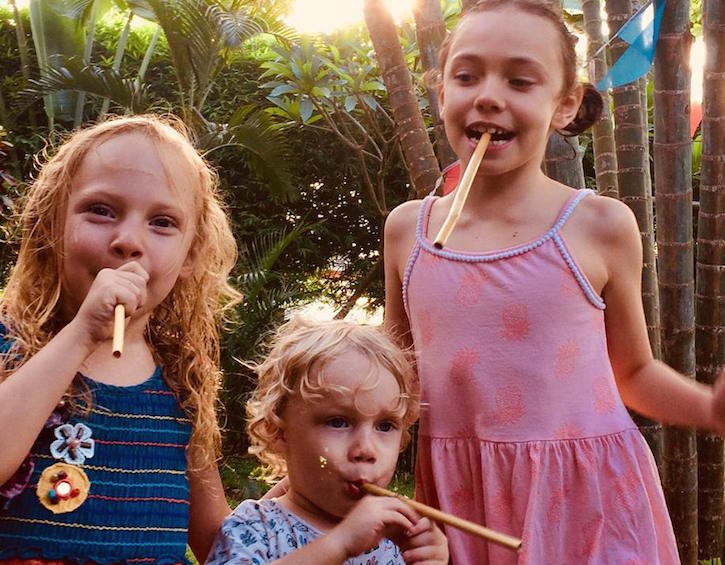
What are the best options for small kids?
Silicone is probably the best reusable straw option due to its softness and ability to clean easily. It’s easy enough to carry a package of paper straws in your purse or diaper bag just in case (though again, these are still single-use). We’ve not had any issues with our toddler using a foldable straw.
Does any of this make a difference?
On the one hand, we take the attitude every little bit helps. Just think how much fewer waste would be generated if every school child in Singapore stopped using straws, or even every mama! On the other hand, we recognise that straws are necessary in particular situations; for instance, people with certain disabilities need to use plastic straws because metal straws get too hot or too cold, paper straws can disintegrate, and bamboo and glass straws are too inflexible.
Interestingly, according to the Be Straw Free campaign, when restaurants take an “offer first” approach (that is, present people with the option of a straw, rather than immediately inserting one into their drink), anywhere from 50-80% of customers subsequently choose not to use a plastic straw. So that’s progress!
In reality, straws are just a small piece of the plastic puzzle. As environmental activist Dune Ives of Lonely Whale told Vox last year:
“Our straw campaign is not really about straws. It’s about pointing out how prevalent single-use plastics are in our lives, putting up a mirror to hold us accountable.”
If the straw issue forces you to give a second thought to accepting a plastic grocery bag, or it causes a restaurant chain to consider how much plastic wrap or plastic cutlery, those are all steps on both micro and macro levels that can have an impact.
Collective action starts with all of us recognizing that we have contributed to this problem, and doing our part to contribute to the solution. Many of us talk to our kids about how to be green and take care of the Earth, and this is a small, simple, demonstrable way to do our part on a daily basis.
Read more:
How to Live the Zero Waste Lifestyle in Singapore
7 Single-Use Plastic Swaps to Live More Sustainably
All About Beach Cleanups in Singapore
Pros: Bamboo is THE most sustainable and eco-friendly option, as it can be harvested right here in Asia and is completely biodegradable (unlike, say, metal straws). It also has slightly more give than glass or metal, and should be all-natural, making it more kid-friendly.
Cons: Can sometimes be cut unevenly, and can stain easily. Because it’s a wood it’s also the most susceptible to mildew and can be the hardest to clean.
Try: Bamboo Straw Girl ($15 for a pack of 5). We love her silicone folding coffee cups, too!
Pros: By far the easiest to clean and keep residue-free since you can see any stains (a huge plus here in humid Singapore where mold and mildew are a major problem!). Also won’t scald you when drinking hot drinks.
Cons: Obviously quite delicate and the most fragile option. We’d be terrified of having one of these around our kids.
Try: Trove of Gaia ($7)
Pros: The cheapest, sturdiest reusable straw option (so long as you keep them clean!). Can also come in both curved and folding varieties, and fun colours like rainbow and rose gold.
Cons: Can rust if not properly cleaned and aired out, leading to funky tasting drinks. Can also be dangerous for hot drinks, and for little kids who might bite down on them.
Try: Seastainable ($7.50 for a set of 2 and cleaner); Neis Haus ($4 for a mini straw); or Lazada ($13.60 for a pack of 4 with cleaner)
Pros: Biodegradable, lightweight and highly portable, super kid-friendly, and come in a wide variety of fun colors and patterns.
Cons: While better than plastic straws, obviously paper straws are still single-use. They also disintegrate fairly quickly and don’t stand up well to hot drinks.
Try: Deep Blue Straws ($5.99 for a pack of 25)
Pros: Not just biodegradable – but edible!
Cons: Generally not gluten-free for those with food sensitivities; breakable.
Try: PastaStraws.org
Image: Pasta Straws
Pros: Soft and flexible (probably the best option for toddlers). A safe material free of chemicals that’s actually more durable than plastic, and super easy to clean (even dishwasher safe).
Cons: Toddlers with sharp teeth who are big chewers might do some damage. Not as widely available as metal and bamboo straws.
Try: Lazada ($5.30 for a pack of 6) or Qoo10 ($9.90 for a pack of 6)
Image: ReServe
Lead image sourced via Pixabay

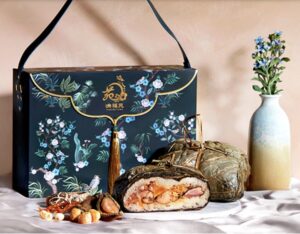
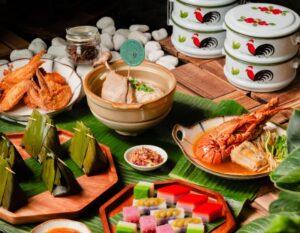

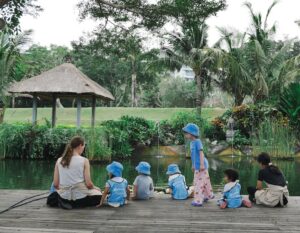

 View All
View All



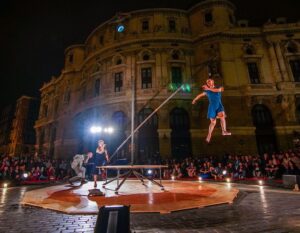
 View All
View All


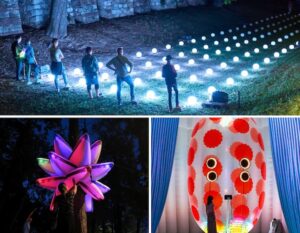


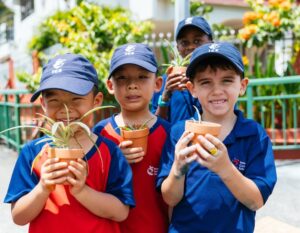



 View All
View All





